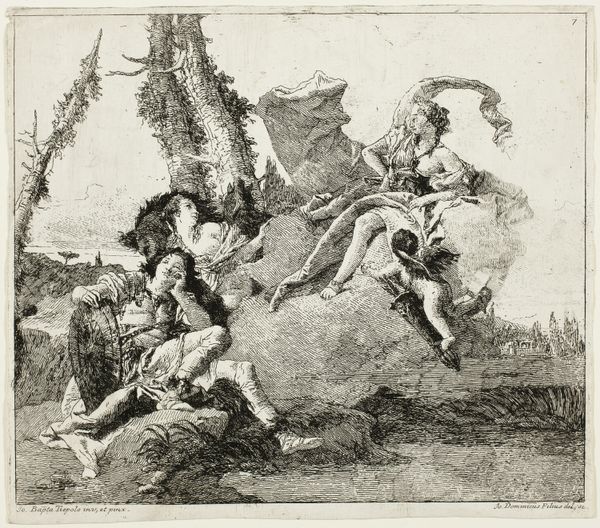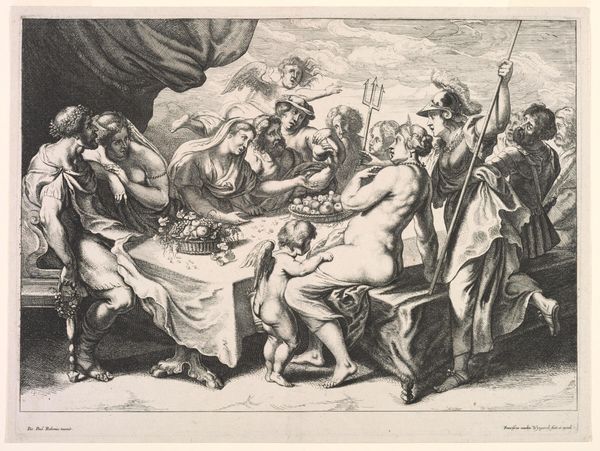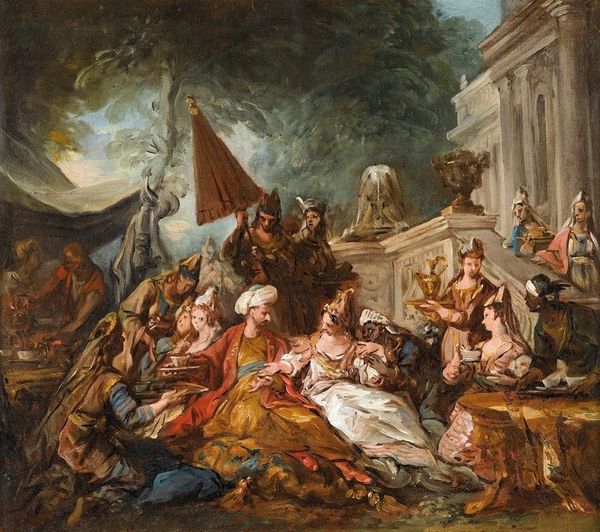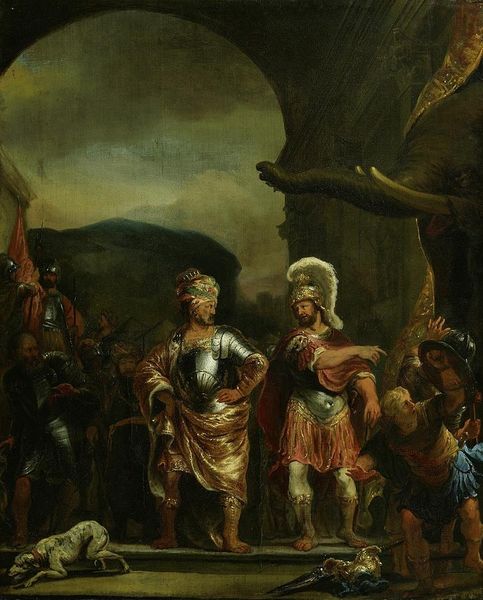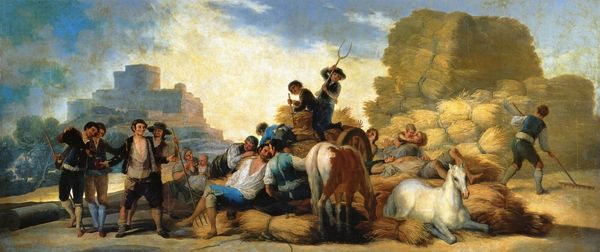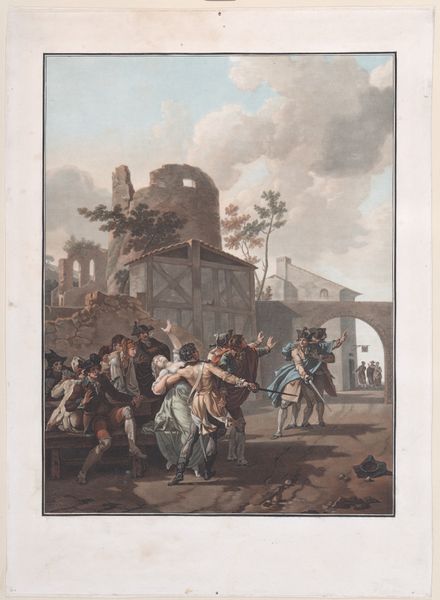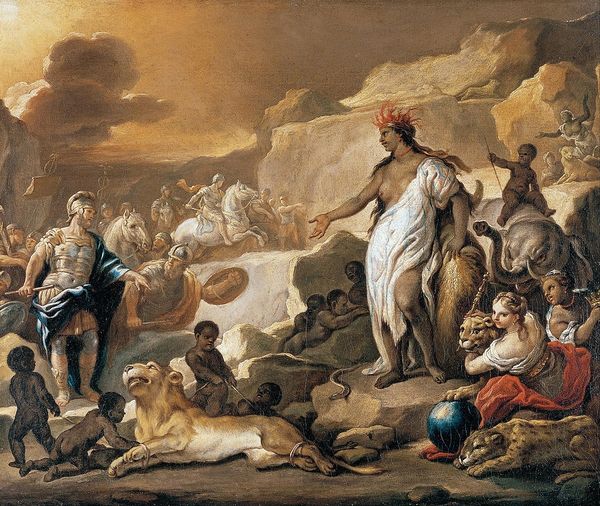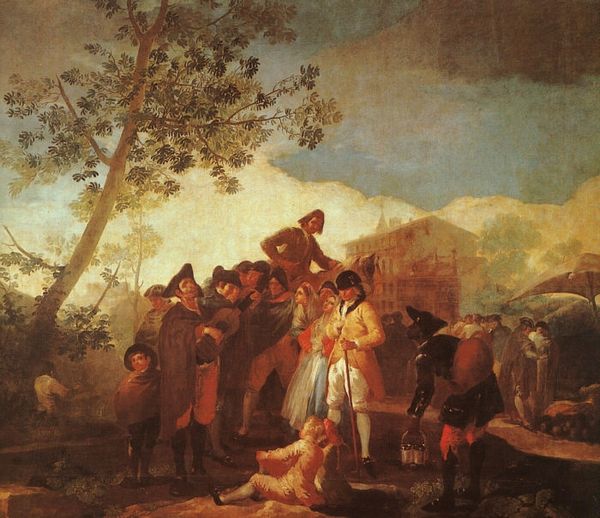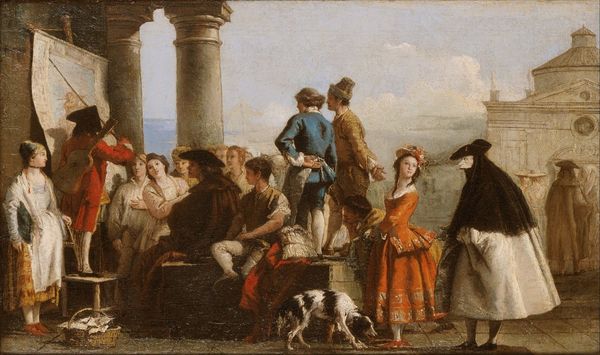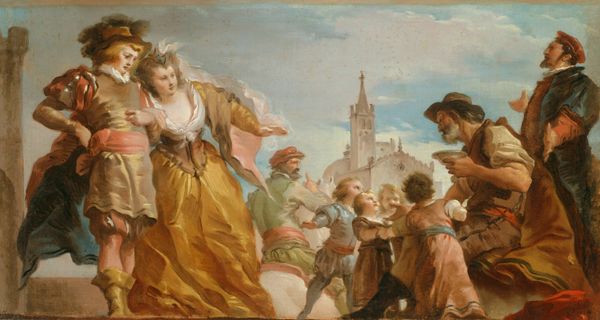
Copyright: Public Domain: Artvee
Curator: The overall impression is carnivalesque, with an almost unsettling joy. What’s your initial read? Editor: "The Triumph of Pulcinella" by Giovanni Domenico Tiepolo, created sometime between 1759 and 1770. The piece presents us with a stage-like scene full of peculiar characters. Gouache seems to capture the theatrical quality here effectively. Curator: Absolutely. Gouache lends itself well to the sense of ephemeral spectacle. The figures, especially those donning the pointed caps, certainly bring to mind commedia dell'arte, doesn’t it? Pulcinella himself, held aloft, a crude sort of king. It's a controlled chaos, visually speaking. Editor: Indeed. Pulcinella is front and center, riding above all with a lit candle. That image reminds us that this celebration might also carry deeper symbolic weight – is it an ironic inversion of authority or a commentary on social structures? The mask also speaks of a blurring between performance and reality. Curator: I see the pointed hats of the supporting crowd of characters echoing clerical attire, perhaps subtly satirizing institutional authority and group think in the church or state. I think Tiepolo critiques the societal norms of his time, using caricature to expose social pretensions. Editor: It's a world turned upside down, presented through very controlled brushstrokes and palette! The muted colours also evoke that sense of history, of memory. Tiepolo is looking both at the present and past in a unique combination. Curator: Agreed, the choice of colors contributes significantly, especially when it comes to its reception and history as a reflection of his environment. The narrative unfolds within a space both public and private, reflecting Tiepolo's attempt at representing Venetian society's complexity. Editor: It's remarkable how potent symbols and satire can be. By dissecting "The Triumph of Pulcinella," we can gain greater clarity when observing other visual culture in painting, theater, and other modes of art. Curator: Yes, art offers us a portal into worlds real and imagined, helping us to examine societal shifts, movements, or change throughout history, too. Editor: It certainly leaves me considering what is authentic behind all that elaborate costumery and performance on view today.
Comments
No comments
Be the first to comment and join the conversation on the ultimate creative platform.


